How to Inflate a Tire with an Air Compressor: Step-by-Step Guide

Inflating a tire is an essential maintenance task that every vehicle owner should know how to do. One of the most efficient ways to inflate a tire is by using an air compressor. An air compressor is a powerful tool that can quickly and easily fill your tires with the necessary amount of air to ensure safe and optimal driving conditions.
Before you begin inflating your tire with an air compressor, it’s important to gather the necessary materials. You will need an air compressor, a tire pressure gauge, and a tire valve adapter. This adapter will allow you to connect the air compressor hose to the tire valve, ensuring a secure and airtight connection.
Once you have all the materials ready, it’s time to start the inflation process. First, locate the valve stem on the tire. Remove the valve cap and attach the tire pressure gauge to check the current pressure of the tire. It’s crucial to know the recommended tire pressure for your specific vehicle, which can usually be found in the owner’s manual or on a sticker located inside the driver’s side door jamb.
After checking the current pressure, you can now connect the air compressor hose to the tire valve using the tire valve adapter. Ensure that the connection is secure and tight to avoid any air leakage during the inflation process. Once everything is properly connected, turn on the air compressor and allow it to fill the tire with air. Keep an eye on the pressure gauge to monitor the progress and stop the inflation process once the desired pressure is reached.
Once the tire is properly inflated, remove the hose from the tire valve and replace the valve cap. Lastly, use the tire pressure gauge to double-check the pressure and ensure that it matches the recommended pressure for your vehicle. By regularly checking and properly inflating your tires, you can improve fuel efficiency, extend the life of your tires, and ensure a safe and smooth driving experience.
Choosing the Right Air Compressor
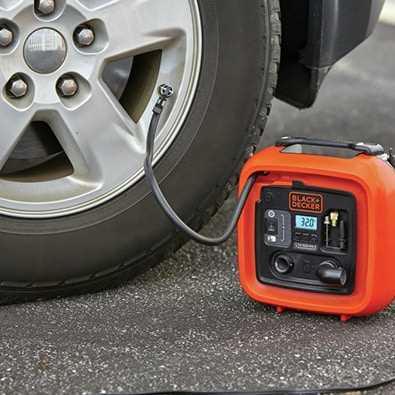
When it comes to inflating tires with an air compressor, choosing the right compressor is essential for a successful job. There are a few factors to consider before making a decision:
Air Pressure and Flow Rate
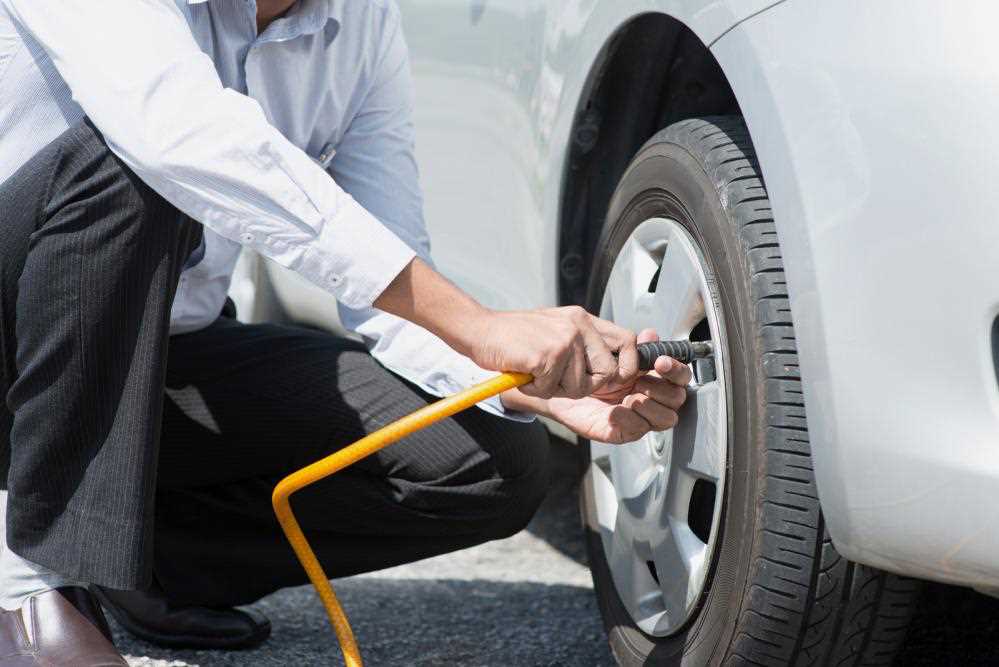
The first thing to consider is the air pressure and flow rate of the air compressor. Different tires require different levels of air pressure, so it’s important to choose a compressor that can meet the specific needs of the tires you plan to inflate. Look for a compressor that has a high enough maximum air pressure and flow rate to handle your tire inflation requirements.
Portability and Size
If you plan to use the air compressor for inflating tires on the go, portability is a key consideration. Look for a compressor that is compact and lightweight, making it easy to transport and store. Additionally, consider whether the compressor has a handle or wheels for added convenience.
Noise Level
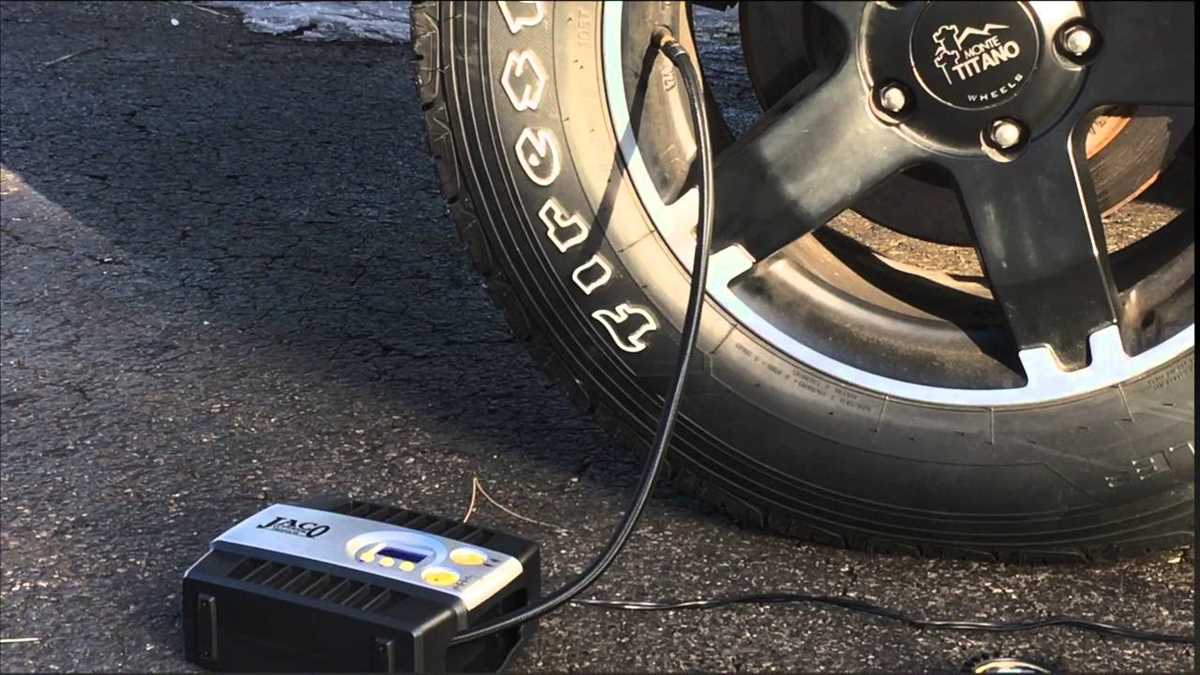
Noise level is another important factor to consider, especially if you plan to use the air compressor in a residential area or noise-sensitive environment. Look for a compressor that has a low noise level rating to minimize disturbances.
Duty Cycle and Tank Capacity
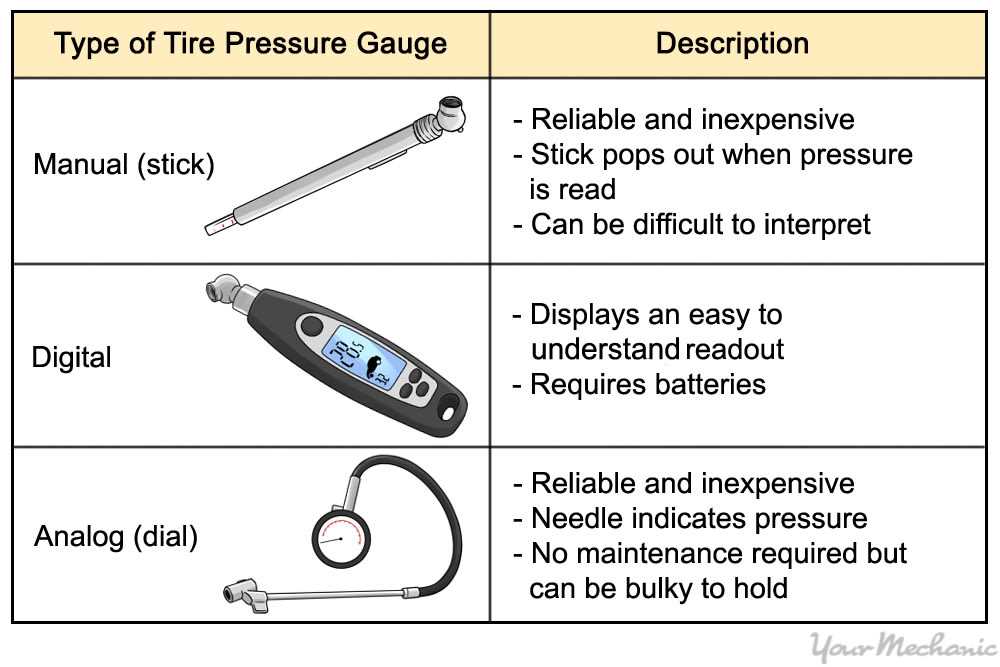
The duty cycle and tank capacity of an air compressor determine how long it can run continuously and how much air it can store. For tire inflation purposes, a compressor with a larger tank capacity and longer duty cycle is recommended, as it will provide a more consistent and efficient inflation process.
By considering these factors and selecting an air compressor that meets your specific needs, you can ensure a smooth and effective tire inflation experience.
Gathering the Necessary Materials
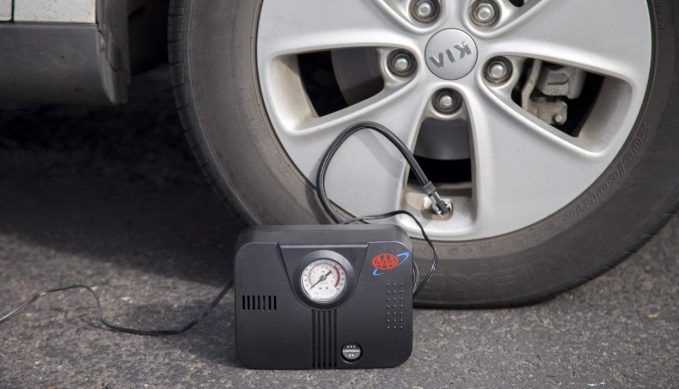
Before you can start inflating your tire with an air compressor, you will need to gather a few essential materials. Having everything you need prepared beforehand will streamline the process and ensure a successful outcome.
- Tire pressure gauge: This tool is used to measure the current pressure of your tire. It is crucial to have an accurate gauge to ensure you inflate the tire to the correct pressure.
- Air compressor: You will need an air compressor to supply the air needed to inflate the tire. Make sure the compressor is in good working condition and has the appropriate pressure capacity for your tire.
- Air hose: The air hose connects the air compressor to the tire valve. It should be long enough to reach all the tires on your vehicle and have a secure connection to prevent air leaks.
- Tire valve adapter: Depending on the valve type of your tire, you may need a valve adapter to ensure a proper connection between the air hose and the tire valve.
- Adequate lighting: It is essential to have proper lighting when inflating your tire, especially if you are doing it in low-light conditions. This will help you see the pressure gauge and valve more clearly.
By having all of these materials ready, you will be well-prepared to begin the process of inflating your tire with an air compressor.
Preparing the Tire
Before inflating a tire with an air compressor, it is important to properly prepare the tire to ensure the best results and to prevent any accidents or damage. Follow these steps to prepare the tire:
1. Check the tire for damage
Inspect the tire for any signs of damage, such as cuts, punctures, or bulges. If you notice any damage, it is important to get it repaired or replaced before attempting to inflate the tire.

2. Remove the valve cap
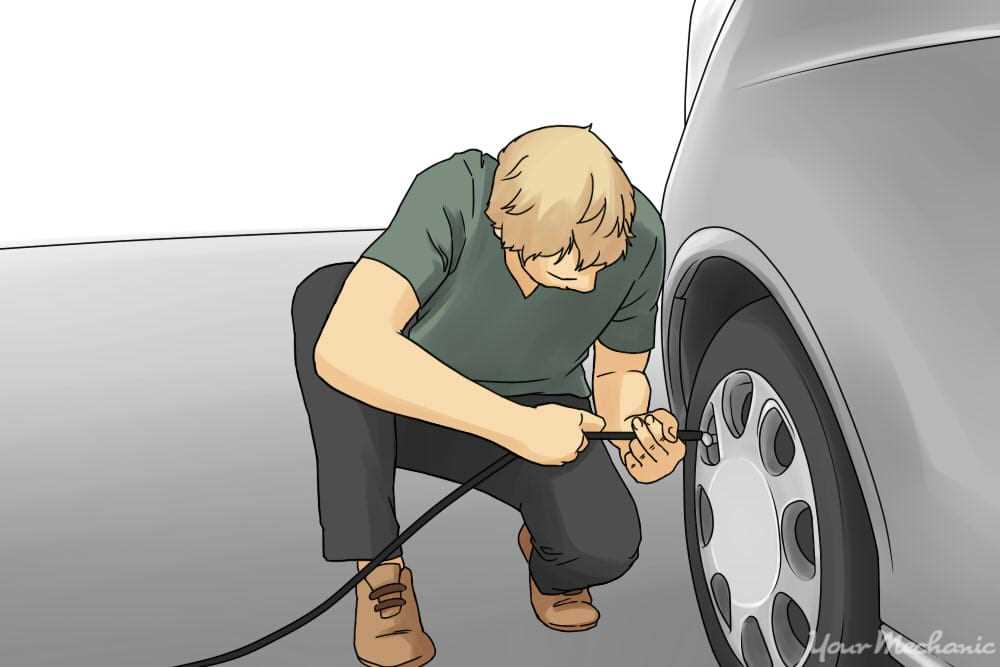
Before attaching the air compressor, remove the valve cap from the tire’s valve stem. This will allow for easy access and ensure a secure connection when attaching the air compressor.
3. Check the tire pressure
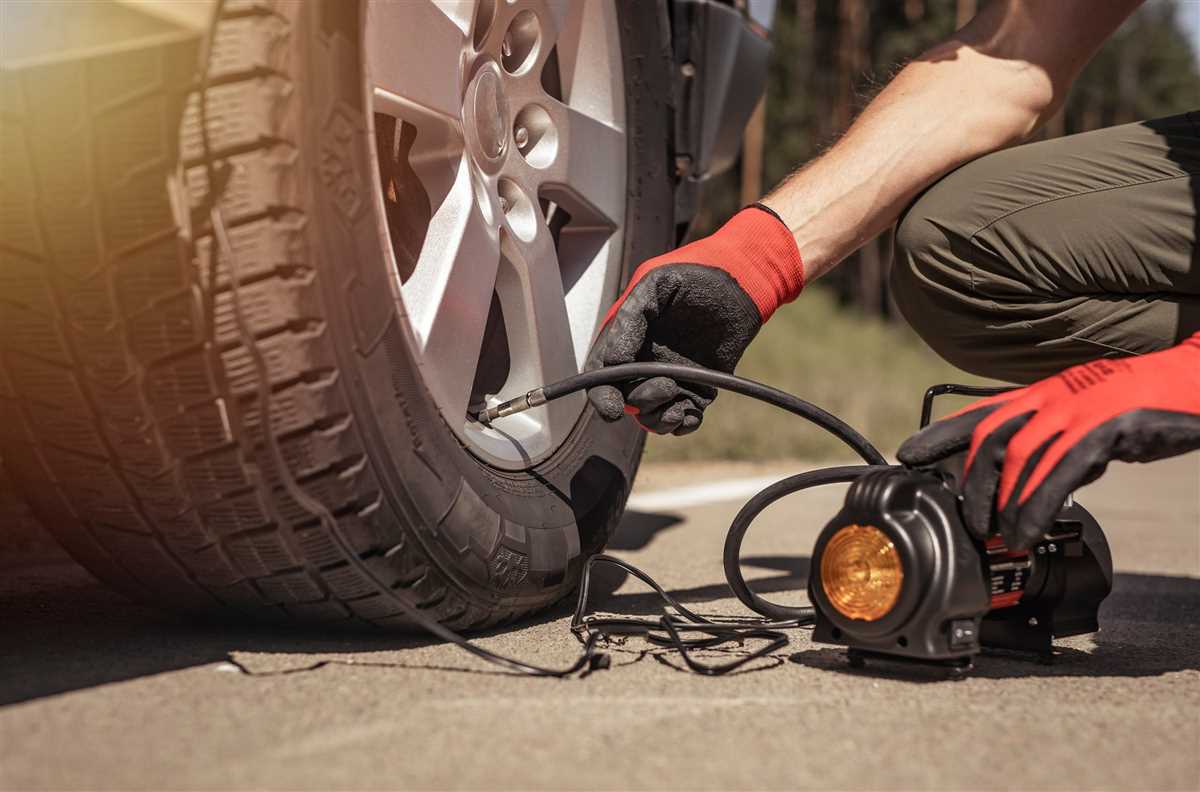
Use a tire pressure gauge to check the current pressure of the tire. Compare the reading to the recommended tire pressure specified by the manufacturer. If the tire pressure is too low, it will need to be inflated. If it is too high, some air might need to be released before inflating the tire.
4. Secure the tire
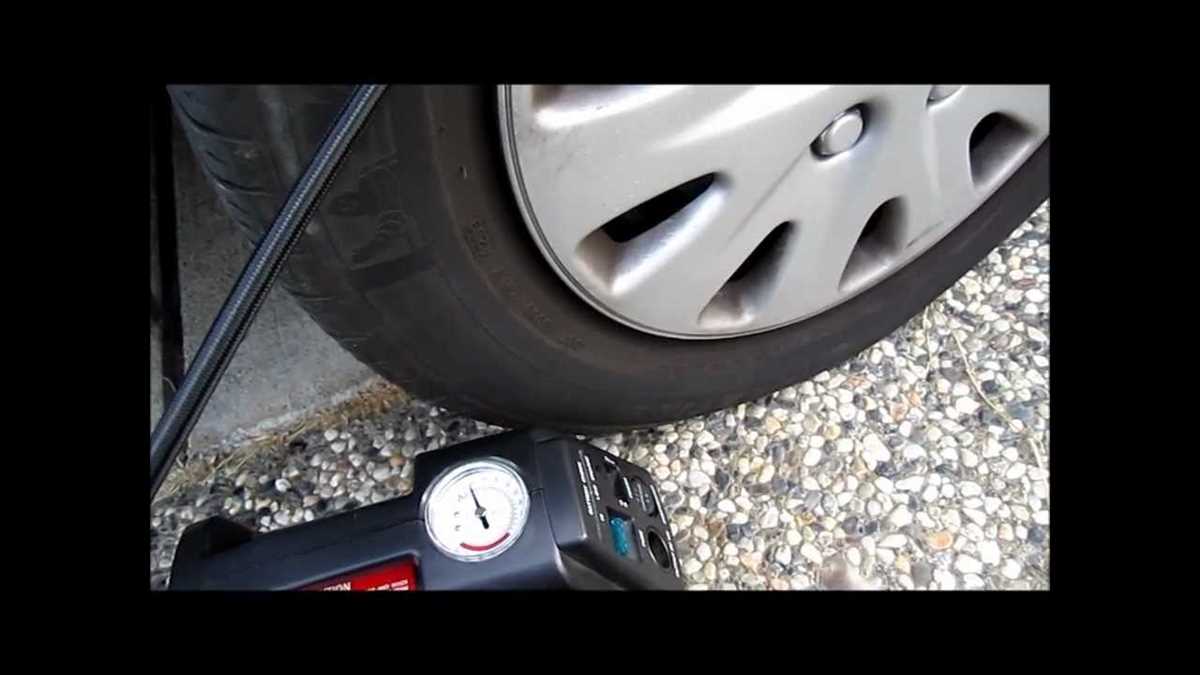

Ensure that the vehicle is parked on a flat and stable surface, such as a driveway or parking lot. Engage the parking brake and place wheel chocks, if available, to prevent the vehicle from rolling. This will help maintain stability and prevent accidents during the inflation process.
5. Position the tire valve properly
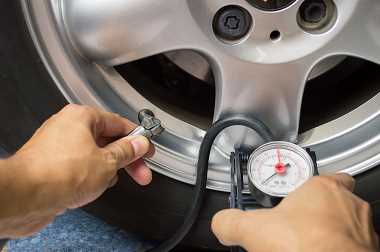
Align the tire’s valve stem in a position that allows for easy access and connection with the air compressor. This will ensure a smooth and efficient inflation process.
By properly preparing the tire before inflating it with an air compressor, you can ensure safety, prevent damage, and achieve optimal results.
Connecting the Air Compressor
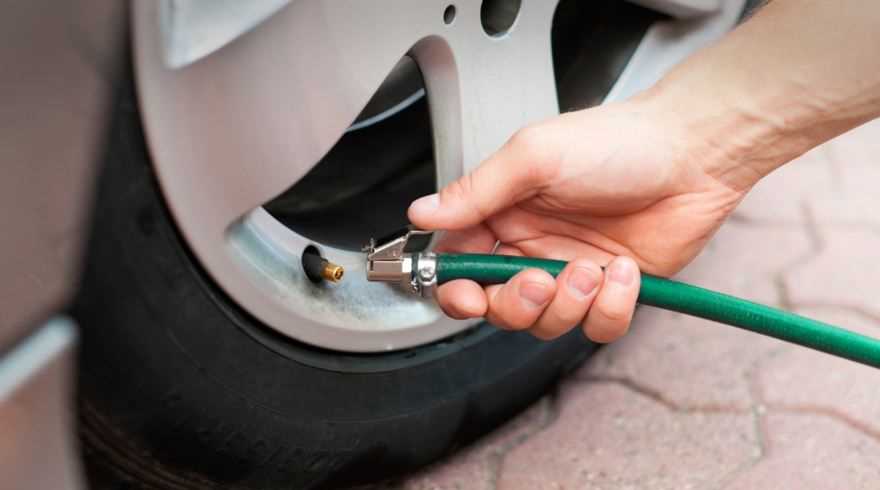
Before you can inflate a tire with an air compressor, you need to connect the compressor to the tire valve. Follow these steps to properly connect the air compressor:
- Locate the valve stem: The valve stem is a small metal or rubber tube sticking out of the tire. It usually has a cap on it to protect it from dirt and debris. Remove the cap from the valve stem.
- Inspect the valve stem: Check the condition of the valve stem to ensure it is in good working order. Look for any signs of damage or wear, such as cracks or leaks. If you notice any issues, it is best to replace the valve stem before proceeding.
- Attach the tire chuck: Take the tire chuck, which is the device that connects the air compressor to the tire valve. Insert the tip of the tire chuck onto the valve stem, ensuring a tight fit.
- Tighten the tire chuck: Once the tire chuck is properly attached, tighten it by twisting it clockwise. This will create a secure seal between the tire valve and the chuck, preventing any air from escaping during inflation.
It is important to note that different types of air compressors may have slightly different attachments and connection methods. Refer to the manufacturer’s instructions for your specific air compressor to ensure proper and safe connection.
Setting the Desired Pressure
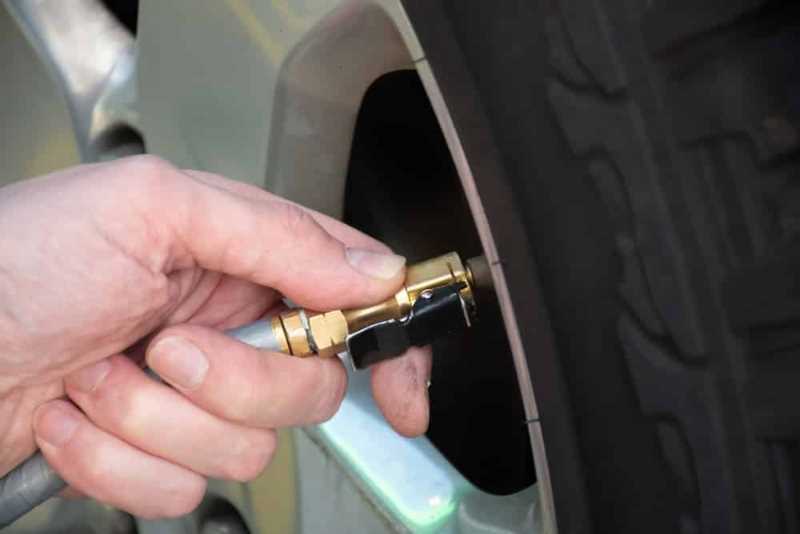
After plugging in and turning on the air compressor, it is time to set the desired pressure for your tire. Before doing that, always consult your vehicle’s owner manual or the sticker on the side of the driver’s door jamb for the recommended tire pressure range. This information is crucial as different vehicles may have different tire pressure requirements.
Once you have found the recommended tire pressure, locate the pressure gauge on your air compressor. It may be integrated into the compressor or available as a separate accessory. Take note of the current pressure reading on your tire, if available.
Next, attach the air chuck to the valve stem of the tire. This can be done by firmly pressing the chuck onto the valve stem until it securely attaches. Make sure the chuck is positioned straight and level before proceeding.
If your air compressor has a built-in pressure regulator, locate the adjustment knob or dial. Use this knob or dial to set the desired pressure for your tire. Turn it in a clockwise direction to increase the pressure or counterclockwise to decrease it. If your air compressor does not have a built-in pressure regulator, you may need to manually adjust the pressure using a separate pressure gauge and manually stopping the air flow once the desired pressure is reached.
It is a good practice to inflate the tire slightly above the desired pressure and then use the pressure gauge to release any excess air if needed. This will help achieve the accurate and desired pressure for your tire. Once you have set the desired pressure, you can proceed to inflate the tire by squeezing the compressor’s trigger or activating the inflation lever. Keep an eye on the pressure gauge to monitor the increasing pressure and make adjustments as necessary.
Inflating the Tire
Once you have connected the air compressor to the tire valve, it’s time to start inflating the tire. Before you begin, make sure the air compressor is turned on and set to the desired pressure level.
Start by pressing the air nozzle onto the valve firmly. You should hear a hissing sound as the air begins to flow into the tire. Keep an eye on the pressure gauge to monitor the pressure level as you inflate the tire.
Slowly fill the tire with air, making sure to keep the nozzle pressed firmly onto the valve. It’s important to add air in small increments and continuously check the pressure gauge to prevent overinflation.
If the pressure level goes above the recommended range for your tire, simply release some air by pressing the valve stem with a small tool or pressing the valve core. This will allow you to reduce the pressure to the desired level.
Once the tire is inflated to the correct pressure, carefully remove the air nozzle from the valve. Be sure to tighten the valve cap securely to prevent any air from escaping.
After inflating the tire, it’s a good idea to check the pressure again after a short period of time. This will ensure that the tire is properly inflated and ready for use.
Checking the Pressure
Before inflating your tire with an air compressor, it is important to check the current pressure of the tire. This ensures that you do not overinflate or underinflate the tire, which can lead to potential safety hazards.
To check the pressure, you will need a tire pressure gauge. This handheld device can be easily found at any auto parts store or online. Simply remove the valve cap from the tire, and firmly press the tire pressure gauge onto the valve stem. You should hear a hissing sound as the gauge makes contact with the stem.
Once the gauge is securely in place, the reading will be displayed on a small dial or digital screen. It is important to note that tire pressure is measured in PSI (pounds per square inch). Refer to your vehicle’s owner manual or the sticker on the door jamb to find the recommended tire pressure for your specific make and model.
Make sure to check the pressure on all four tires, as they may vary depending on factors such as the load of the vehicle and outside temperature. It is also a good idea to check the spare tire, as it may also need inflation. If any tire’s pressure is too low, it can lead to poor fuel efficiency, increased tire wear, and potential blowouts.
Once you have checked the pressure and have gathered the necessary information, you can proceed to the next step of inflating your tire with an air compressor.
Finishing Up
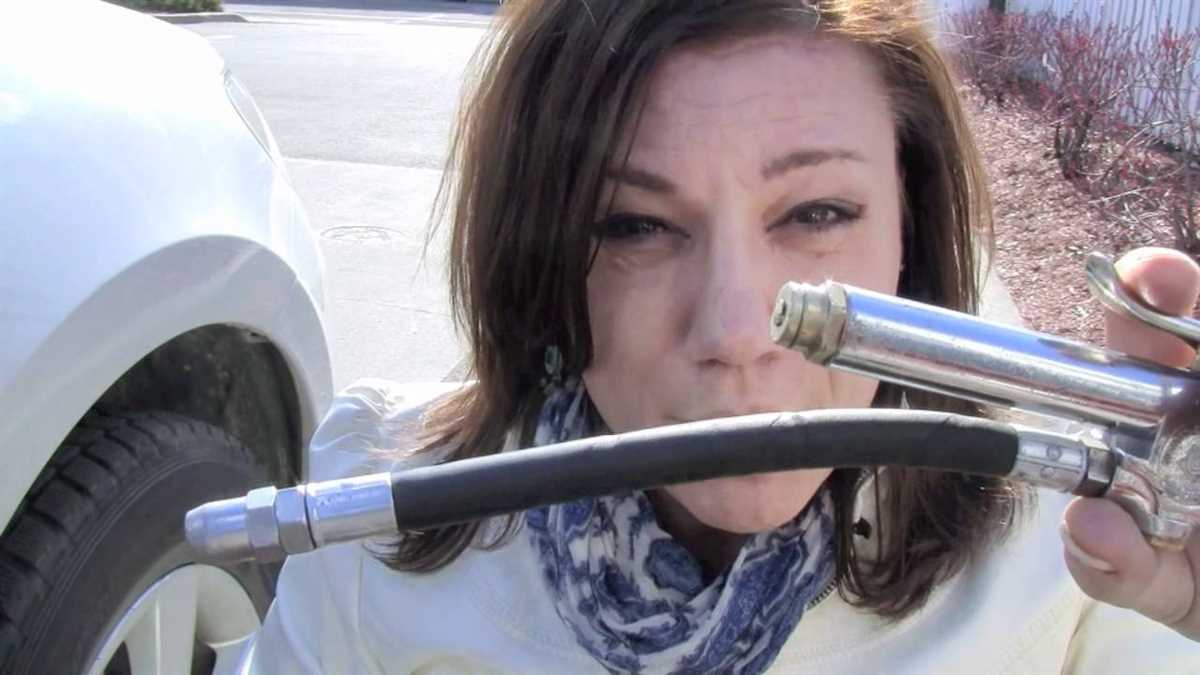
After completing the inflation process, there are a few final steps to take to ensure your tire is properly inflated and ready for use.
- First, check the tire pressure with a pressure gauge. This will help you determine if the tire is properly inflated to the recommended level. If the pressure is below the recommended level, you may need to add more air.
- Once you’ve confirmed the tire pressure, remove the air chuck from the valve stem and make sure to close the valve tightly. This will prevent any air from escaping.
- Next, check the tire for any signs of damage or wear, such as punctures, cracks, or bulges. If you notice any issues, it may be necessary to replace the tire.
- If everything looks good, it’s time to put away your air compressor and any other tools you used. Make sure to store them in a safe and dry place.
- Finally, don’t forget to properly dispose of any old or unused air from your air compressor. Follow the manufacturer’s instructions for disposing of compressed air safely.
By following these steps, you’ll ensure that your tire is properly inflated and ready to hit the road. Regularly checking and maintaining tire pressure is an important aspect of vehicle maintenance that contributes to both safety and fuel efficiency.
FAQ:
What is an air compressor?
An air compressor is a device that converts power into potential energy stored in pressurized air.
Why do I need an air compressor to inflate a tire?
An air compressor is needed to fill the tire with pressurized air quickly and efficiently.
What are the advantages of using an air compressor to inflate a tire?
The advantages of using an air compressor include faster inflation time, accurate pressure control, and convenience.
Can I use an air compressor to inflate other things besides tires?
Yes, an air compressor can be used to inflate items such as sports balls, air mattresses, and inflatable toys.
What are the potential risks when using an air compressor to inflate a tire?
Potential risks include overinflating the tire, causing a blowout, or not properly connecting the air compressor, leading to a leak.
Are there any safety precautions to follow when using an air compressor?
Yes, it is important to wear safety glasses, gloves, and follow the instructions provided by the manufacturer. It is also important to keep the air compressor away from flammable materials.
Video:









